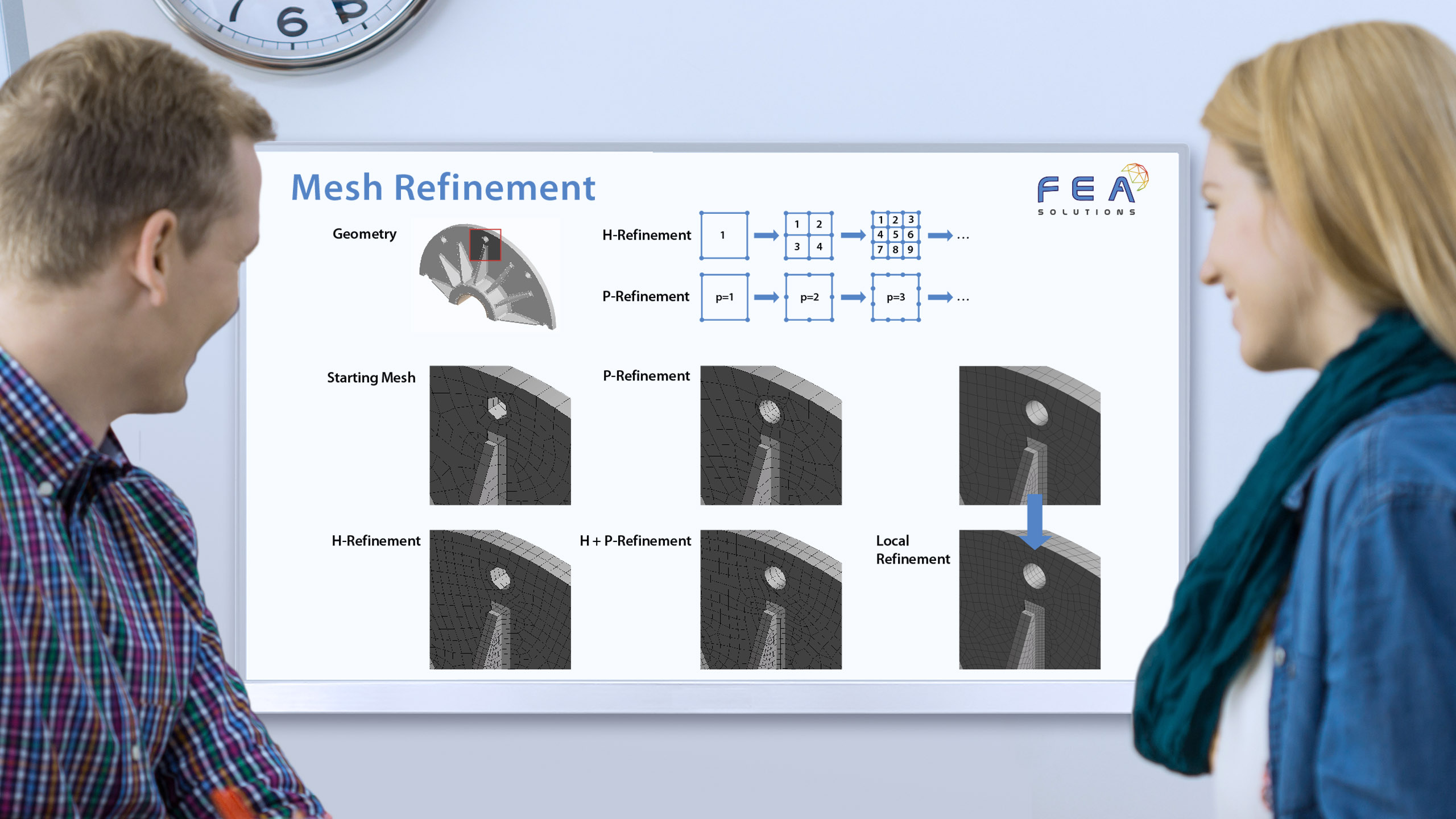
18 May Mesh Refinement
As FEA results are calculated at the nodes (https://fea-solutions.co.uk/nodal-stress-calculation/), they depend on the quality of the mesh (https://fea-solutions.co.uk/fea-terminology/). To achieve a high quality mesh, it must be refined in areas of small geometric details or high curvature. Thus, the geometric effect on results can be captured accurately. For example, a circle cannot be represented by only 2 1st order elements (https://fea-solutions.co.uk/element-order/). On the other hand, regions of little to no geometric change can be made up of fewer large elements.
When refining the mesh, there are two methods:
– H Refinement – the reduction of edge size
– P Refinement – Increasing the number of mid-side nodes.
Both methods are increasing the number of nodes in a given area. Having a higher node density will lead to more results being calculated, as in FEA, results are calculated at the nodes.
H Refinement improves the accuracy of results by using a fine mesh (more elements) which are of the same element order. This refinement method decreases a characteristic length of an element.
P Refinement increases the element order used, without changing the number of elements in the mesh. Through P Refinement not only is the accuracy of the results likely to increase, the mesh will better represent the geometry of the structure that is being analysed.
The most efficient way to ensure a good quality mesh when refining is to use 2nd order elements initially and then undergo H Refinement in areas where it is necessary to have a higher number of elements.
Please call us today on +44 (0)1202 798991 for any engineering analysis requirements you might have.
